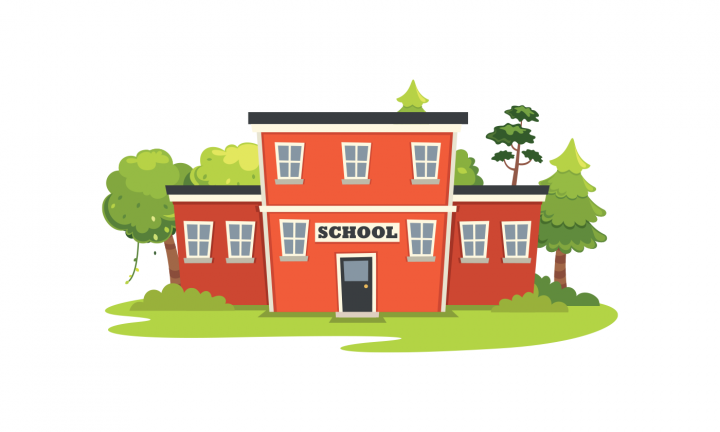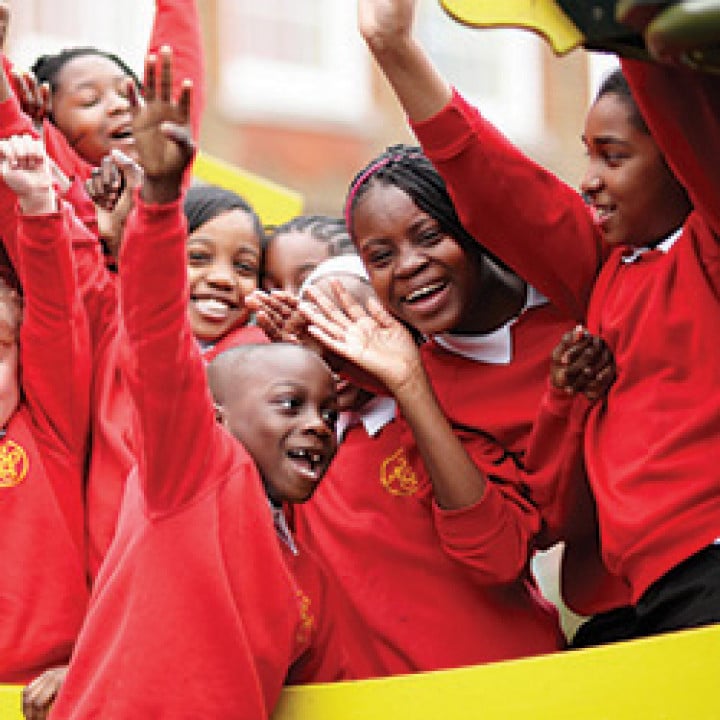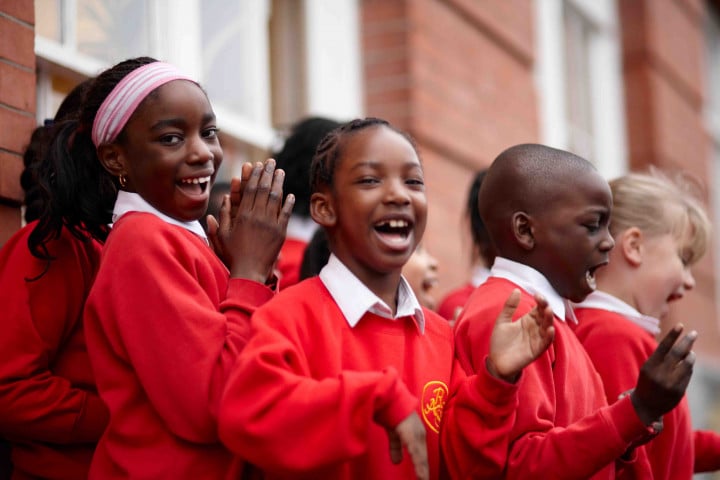
Given the current changing situation and the concerns around the safety of singing, many schools and teachers may be looking for ways to use songs with their pupils in new ways.
If you are singing, we have commissioned some guidance to help you from Professor Martin Ashley. Given COVID-19 and the current recommendations, when you do sing, we suggest that you sing in bubbles, side by side (as opposed to face to face), for short periods of time and in well ventilated rooms or outside. It takes a bit of organising at first but you’ll soon see the benefits.
As ample research has proved time and again, the benefits of singing and music are wide-ranging. In short, musical experiences are good for us and especially in challenging situations, can be relied upon to boost self-esteem and confidence, support learning, improve concentration and listening, and help us in feeling connected to our communities. Plus, they’re lots of fun too!
The breadth of resources on the Sing Up website means that you have at your fingertips a host of material that can be used to support wellbeing, learning and progression. From listening to a song to embed key concepts in maths and English, to writing new verses to a song (as a poem) for discussing PSHE themes, to remembering song lyrics to help retain facts and information about a history topic, Sing Up Membership provides access to resources which support music based creative learning, the impact of which will be wide-reaching and long term.
If your school has decided to refrain from singing for a period, there are many ways that any of the more than 1,000 songs on our Song Bank can be used in your work. Why not try some of the following ideas? All of these will support pupils’ learning as well as bring joy to the classroom.
- Dive into a topic by listening to topic songs, follow the lyrics on our scrolling whiteboard and discuss
- Use action songs for lesson starters, brain breaks and in the playground
- Change the mood with fun songs/games
- With our backing tracks: Create body percussion patterns and layer them up, make up dance routines, write new songs
- Mark the pulse with actions and clap the rhythm, use our notation display to follow the melody, lyrics and chords
- Sign the song using BSL and/or Makaton
Weaving songs into the school day
Sing Up has got the largest and most comprehensive library of curriculum songs and complementary resources and activities covering the widest range of subjects and topics for EYFS, KS1 and KS2. There are many ways to incorporate songs creatively into your work.
Routines
- In transitions and routines, for example, you can still sing the lining up song outdoors in the playground. Staff can also use some of the routine songs as rhymes/chants instead of songs.
- Welcome in the new day with a funky warm-up like Wiggle jiggle or Wiggle your fingers as a wake up and shake up song, following the actions and dance moves.
- Play a welcome song such as Hello, how are you? and sign to one another.
- Introduce regular brain breaks by using fun action songs to relieve any tension. Try out the actions to Tony Chestnut, Baby one, two, three, Top-notcher or Bungalow.
- When it comes to clearing up, play the performance track of The tidying up song to give children a time frame within which to tidy up the classroom (it also describes some of the necessary behaviours i.e. pencils put away, rulers collected etc).
- End the day by listening to The goodbye song. Pupils could act out some of the words and follow the instructions i.e. get your coat and bag in a sensible way.
Songs to support literacy and numeracy
- For EYFS and KS1 literacy, play Word space! whilst children check their work, helping them to ensure that they’ve used all the writing rules. In KS2, use Do it, be it (verb song) and Unpack your adjectives to consolidate knowledge.
- Choose a song related to that day’s mathematical concept. For example, for doubling, listen to Mister Double Trouble and for number bonds to 10, Farmer Pete. Ask pupils to write down the next number in the sequence on their whiteboards and hold them up.
Songs for topics and subjects
- Take a look at our Top Ten Cross-Curricular Playlists depending on what subjects and topics you’re covering. Our Top Ten KS1 Topic-Themed Class Assembly Songs (even if you won’t be doing assemblies) will give you some ideas too.
- Whatever your topic, listen to the performance track of the song, asking pupils to pick our key facts. Using their newly acquired knowledge, they can create fact files and information posters to capture what they’ve learnt.
- In MFL lessons try a French chant in, such as Saute et secoue with KS2 or following the actions of Mains en l’air with KS1.
- Create a dance routine in PE to a favourite pop song or a backing track with a steady beat.
Calm and sooth
-
Calm pupils after lunch time or before home time with something like Souallé, guiding them through some deep breathing and meditation/visualisation techniques.
Explore feelings
- Use songs as the starting point to conversations around feelings. In PSHE or circle time, discuss the lyrics to I get angry, and list things that make you happy using The giggle song to start you off, or rap the words to Gotta be me.
Other short ideas for songs
- Simply, you could hum along to songs gently with closed mouths, ask pupils to click, clap or tap the pulse, create some body percussion rhythms, pause the video and talking about lyrics, re-write a verse, learn the sign language for it or make up your own actions, create dance routines in the playground etc.
Get in touch
What other ideas can you and your pupils think of? How ever you decide to utilise songs and music activities in your classroom, we’d love to hear how you’re getting on. Get in touch on social media or by emailing [email protected].



